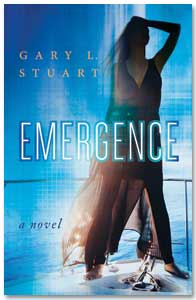The ethics of this touchy, thorny, piece of baloney topic can be said in one word. Honesty. To be honest it has to be clear. That’s what makes writing about it ethically challenging—very few who write about it give a hoot about being honest—they write to send political messages—the truth be dammed.
In order to express an opinion, render judgment, inform, or explain anything, ethical writers should define the topic before blaming it. In that spirit, the other ways to vote, are vital to defining “ranked voting.” You cannot explain it abstractly, you must put the term in context. The context is “plurality voting.”
Plurality voting is winner take all voting. A plurality voting system is an electoral system in which the winner of an election is the candidate that received the highest number of votes. The candidate need not win an outright majority to be elected. This system is sometimes referred to as first-past-the-post or winner-take-all. This is the most common voting system used in the United States.[1] Each voter casts one vote to choose one candidate amongst many, and the winner is decided on the basis of the highest number of votes garnered by a candidate. It’s also known as winning by a relative majority when the winning candidate receives the highest number.
At the risk of complicating something simple, it is often wise to distinguish between plurality voting and majority voting. In the latter, a winning candidate must receive an absolute majority of votes: more than half of all votes. Under plurality voting, the leading candidate, whether or not they have a majority of votes, is elected. Not every winner-takes-all system is plurality voting. One major distinction is that in instant-runoff voting, one non-plurality winner is elected. Also, not every plurality voting method is majoritarian; the single non-transferable vote use plurality rules but are considered semi-proportional systems.[2]
In recent years, the term, ranked voting (sometimes called ranked-choice voting), has come into use as an alternative name for IRV. But traditionally, the term ranked voting was understood to encompass many different voting systems with IRV being just one example. In this older terminology (which we adopt both here and other articles), a voting system is considered a ranked voting system provided that voters are asked to list, starting with their most favored candidate and with other candidates successively less supported appearing later in the list. As all voting systems must do, IRV also specifies how the winner is to be determined from the voters’ ballots.
The essential reason why two states (Alaska and Maine) have moved away from plurality voting to ranked-choice voting is because the Alaskans for Better Elections initiative ensures that every Alaska voter has the right to have their voice heard and vote counted, regardless of whether they think of themselves as Republican, Democrat, or independent. It restores integrity to their elections and gives We the Voters the voice, choice, and power through our votes.[3]
Sarah Palin lost her recent election effort in Alaska. Predictably, she denied losing, again. She said, “We Won! We won! This was immediately after the Alaska race was called in favor of her opponent. She said, “We won pretty handedly, if not for Ranked Choice Voting.”[4]
As of July 2022, 55 cities, counties, and states are projected to use RCV for all voters in their next election based on using it in their most recent election or a recent adoption. These jurisdictions are home to over 11 million voters, and include 2 states, 1 county, and 52 cities. Military and overseas voters cast RCV ballots in federal runoff elections in 6 states. 43 jurisdictions used RCV in their most recent elections.”[5]
Because ethical norms and imperatives are vital in democracy, but seemingly distant from party politics, Common Cause is a bipartisan way to talk about ranked choice voting as opposed to plurality voting.
“Every American deserves to have their voice heard in our elections, from city council to the presidency. Those who are serving in elected office should reflect the beliefs of the people. In a democracy, the people have the power— and voters should have the final say. Yet, the way our voting systems are designed can limit voter’s choices. Often, voters feel like there is a predetermined winner— typically the most well-connected or well-funded. Or voters feel like they’re choosing the lesser of two evils in order to prevent a worst-case scenario. In most American elections where there are more than two candidates, candidates don’t even need the majority of the vote; they just need to achieve a higher percentage than anyone else. As a result, most candidates only prioritize their core group of supporters, and don’t take the time to engage with the whole electorate.”[6]
Not everyone likes ranked-choice voting. The Heritage Foundation’s mission is to “Mobilize Conservatives and Unite the Conservative Movement to Work Together.”[7] It is inalterably opposed. “You will not believe what ‘reformers’ have devised to tinker with and manipulate our elections. It is called ranked choice voting (or “instant runoff voting”)—but it is really a scheme to disconnect elections from issues and allow candidates with marginal support from voters to win elections. In the end, it is all about political power, not about what is best for the American people and for preserving our great republic. So-called reformers want to change process rules so they can manipulate election outcomes to obtain power.”[8]
On the other side of the aisle, Democrats like ranked-choice voting. “Ranked choice voting gives the Democratic Party a way to hold its sprawling diverse coalition together. It provides every segment of the party a chance to have a stake in the ultimate winner.”[9]
Campaigns can feel like a race to the bottom, where a zero-sum approach leads to negative campaigning designed to turn people away from the other candidates, rather than draw them in with compelling ideas. Sometimes, crowded primaries—in which many candidates share similar platforms—can split the vote. Someone who the majority of the voters oppose can win with a low percentage of the vote.
To identify ethical imperatives in ranked voting, consider these pros and cons.[10] The ethical pros favoring ranked voting are: (1) It attracts candidates with strong moral views. (2) It encourages civility. (3) It isn’t wasteful or inherently biased. (4) it eliminates the need for multiple elections. The ethical cons disfavoring ranked voting are: (1) It can trick voters because its complicated. (2) The candidate with the most votes can lose. (3) Your vote might be “exhausted.” This happens when all candidates are eliminated in the process—there is no stated preference by the voters so none of them get the vote. (4) It violates a core American value—one person, one vote. That violates the equality principle and puts disenfranchised groups at risk.
All of these factors can add up to an election that doesn’t truly represent what the people want. Ranked-choice voting offers a solution. It is a system that accurately represents voters’ preferences. It makes sure that the winner is the candidate with the most support, even if they are not everyone’s top choice.
[1] https://ballotpedia.org/Plurality_voting_system
[2] https://en.wikipedia.org/wiki/Plurality_voting
[3] https://alaskansforbetterelections.com/
[4] https://www.msn.com/en-us/news/politics/we-won-we-won-after-losing-election-sarah-palin-rants-we-won-pretty-handedly-if-not-for-ranked-choice-voting/vi-AA11mtxc?category=foryou
[5] https://www.fairvote.org/where_is_ranked_choice_voting_used
[6] https://www.commoncause.org/democracy-wire/ranked-choice-voting-how-does-it-work/
[7] https://www.heritage.org/about-heritage/mission
[8] Ibid.
[9] https://www.alternet.org/2021/07/ranked-choice-voting/
[10] https://www.rankedvote.co/guides/understanding-ranked-choice-voting/pros-and-cons-of-rcv

I am an author and a part-time lawyer with a focus on ethics and professional discipline. I teach creative writing and ethics to law students at Arizona State University. Read my bio.
If you have an important story you want told, you can commission me to write it for you. Learn how.






 I am an author and a part-time lawyer with a focus on ethics and professional discipline. I teach creative writing and ethics to law students at Arizona State University.
I am an author and a part-time lawyer with a focus on ethics and professional discipline. I teach creative writing and ethics to law students at Arizona State University.  My latest novel is Emergence, the sequel to Let’s Disappear.
My latest novel is Emergence, the sequel to Let’s Disappear.  If you have an important story you want told, you can commission me to write it for you.
If you have an important story you want told, you can commission me to write it for you.